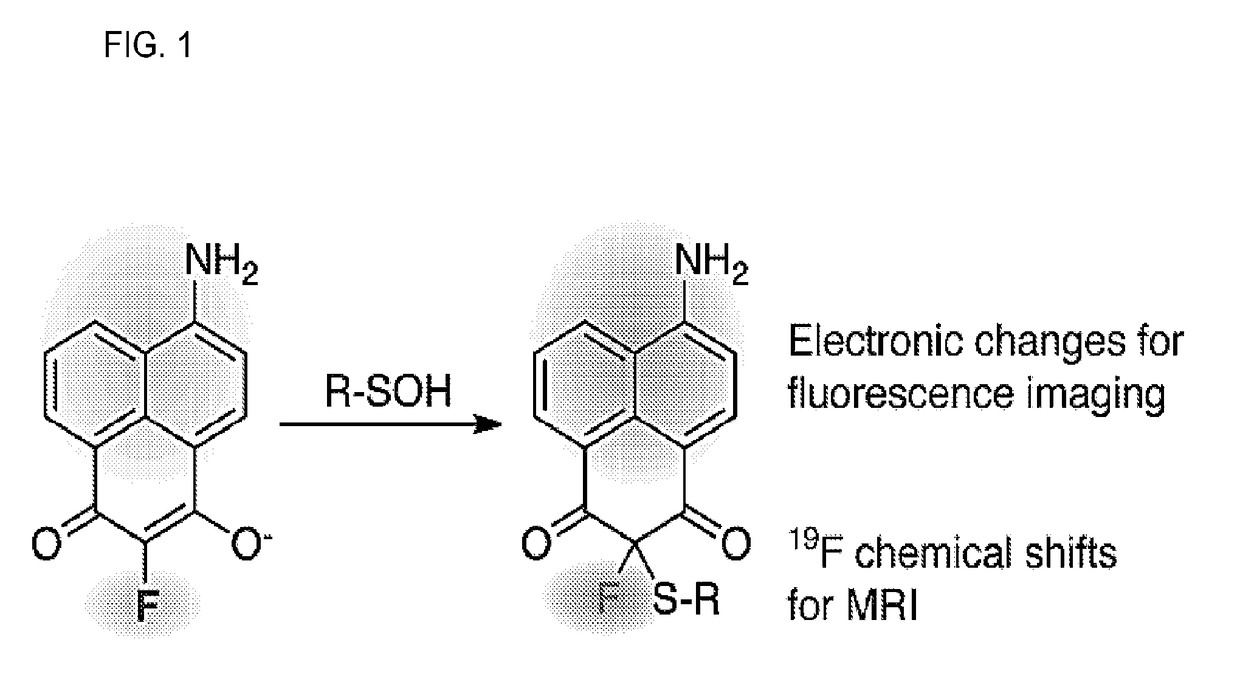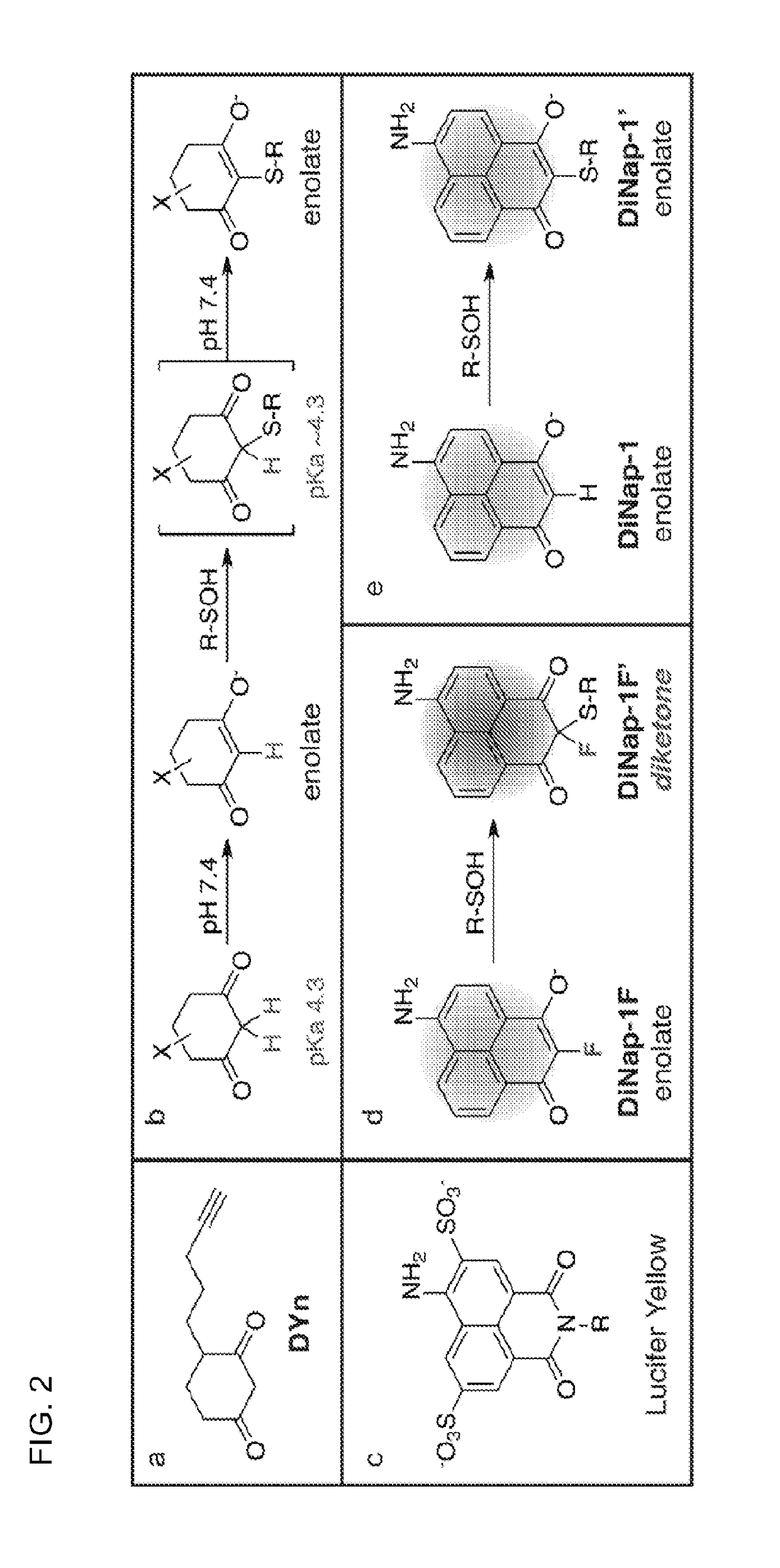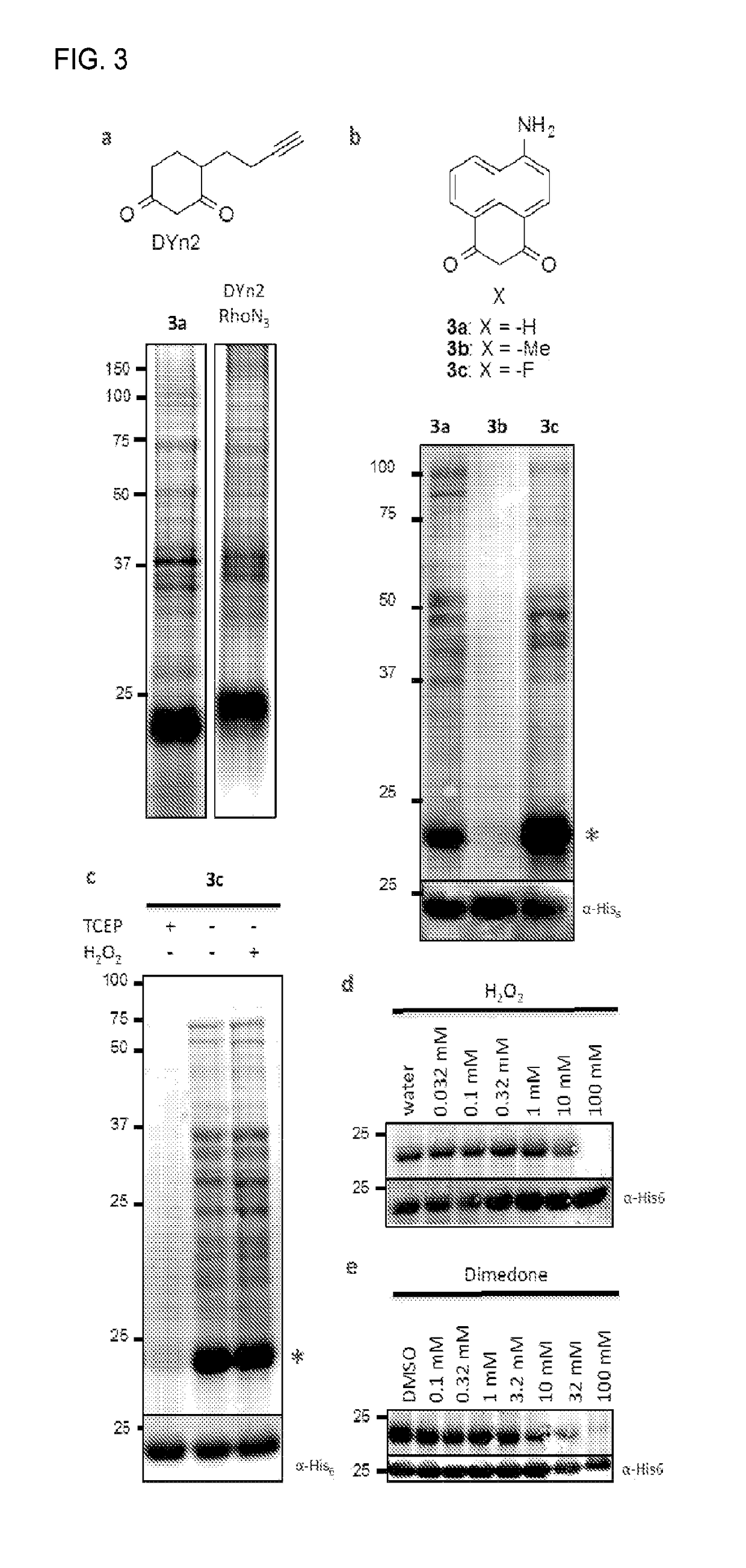Compositions and methods for detecting protein sulfenylation
a technology of protein sulfenylation and composition, applied in the field of composition and methods for detecting protein sulfenylation, can solve the problems of inability to assign whether these methods label conjugated or unbound probes, little is known about the sub-cellular dynamics of protein sulfenylation, and no current methods for live-cell imaging of protein sulfenylation
- Summary
- Abstract
- Description
- Claims
- Application Information
AI Technical Summary
Benefits of technology
Problems solved by technology
Method used
Image
Examples
example i
[0072]Dimedone was first shown to react with sulfenic acids in the 1960s (see, e.g., Allison, W. S., 1976 Accounts of Chemical Research 9, 293-299), yet until recently there were no significant advancements. In the last few years several groups have reported alkynyl probes such as DYn (FIG. 2a) for click chemistry conjugation, or other reporter substitutions at the distal end of the ring, like biotin or fluorescein (see, e.g., Leonard, S. E., et al., 2009 Acs Chemical Biology 4, 783-799; Poole, L. B., et al., 2005 Bioconjugate Chemistry 16, 1624-1628). In parallel, monoclonal dimedone-reactive antibodies have been developed that allow direct detection of covalent dimedone adducts by western blot and immunofluorescence (see, e.g., Seo, Y. H. & Carroll, K. S., 2009 PNAS 106, 16163-16168). These probes have also been used for enrichment and analysis by mass spectrometry, providing the first in vivo profile of sulfenylated proteins (see, e.g., Leonard, S. E., et al., 2009 Acs Chemical B...
example ii
[0078]Unlike visible light, radio waves and magnetic fields are easily transmitted through the body. 19F has comparable receptivity (83%) and isotopic abundance (100.0%) to 1H NMR, but unlike hydrogen it is virtually absent in biological samples, providing a high intrinsic signal-to-noise (see, e.g., Knight, J. C., et al., 2011 Rsc Advances 1, 1415-1425). It also has a wide chemical shift range (300 ppm) but changes chemical shift can be measured down to 19F-NMR is highly sensitive to small chemical changes, which has been used to report biological activities or binding to cellular targets, in addition to biodistribution and pharmacokinetics. Recently, a mechanism-based small-molecule probe was developed to measure monoamine oxidase A activity, which undergoes oxidation and β-elimination of a fluorophenol to induce a 4.2 ppm 19F chemical shift (see, e.g., Yamaguchi, K. et al., 2011 Journal of the American Chemical Society 133, 14208-14211). Interestingly, α-fluoro-dimedone analogues...
example iii
[0090]The probes of the present invention will be tested using a similar series of biochemical assays to define reactivity and cell permeability. In addition, the response of such probes to peroxide addition in live cells will be tested. In addition, the spatial profile of sulfenylation of cancer cells (including, for example, A431 cells shown to couple EGF stimulation to Nox activation and EGFR sulfenylation (see, e.g., Paulsen, C. E. et al., 2012 Nature Chemical Biology 8, 57-64)) will be tested.
PUM
| Property | Measurement | Unit |
|---|---|---|
| chemical shift | aaaaa | aaaaa |
| spectroscopic properties | aaaaa | aaaaa |
| ratiometric fluorescence imaging | aaaaa | aaaaa |
Abstract
Description
Claims
Application Information
 Login to View More
Login to View More - R&D
- Intellectual Property
- Life Sciences
- Materials
- Tech Scout
- Unparalleled Data Quality
- Higher Quality Content
- 60% Fewer Hallucinations
Browse by: Latest US Patents, China's latest patents, Technical Efficacy Thesaurus, Application Domain, Technology Topic, Popular Technical Reports.
© 2025 PatSnap. All rights reserved.Legal|Privacy policy|Modern Slavery Act Transparency Statement|Sitemap|About US| Contact US: help@patsnap.com



